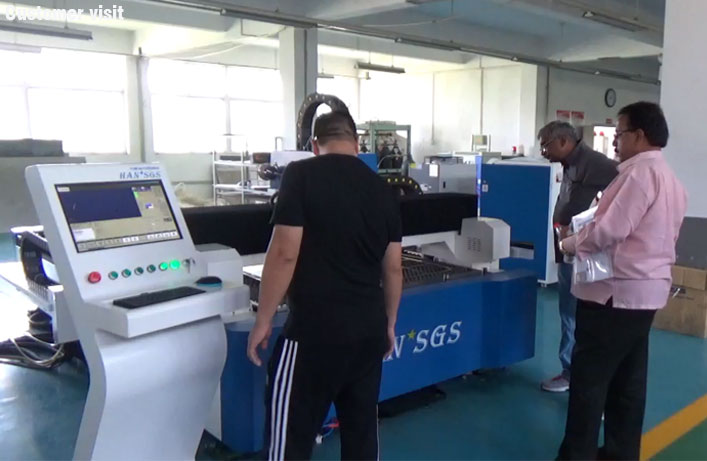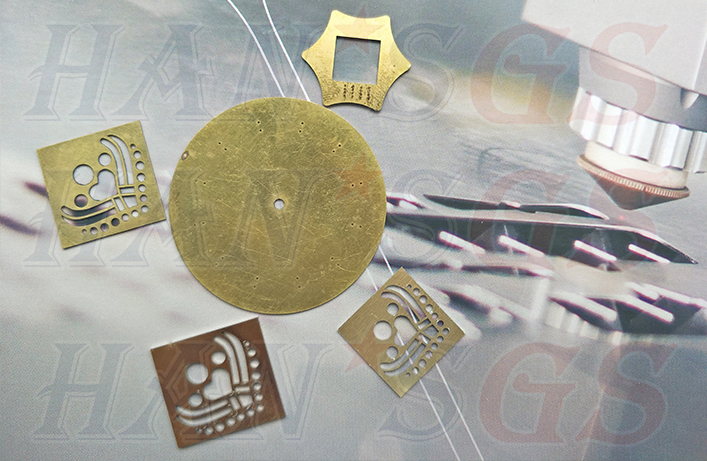The development of China's stainless steel industry will be somewhat late compared with foreign countries, but this does not affect the current technology of China's stainless steel industry to avoid the backwardness of foreign countries. Today, Xiaobian will tell you about some of the processes of stainless steel laser cutting machines.

Stainless steel refers to steel that is resistant to weak corrosive media such as air, steam, water, and chemically etched media such as acid, alkali, salt, etc., also known as stainless acid-resistant steel. In practical applications, steel that is resistant to weak corrosive media is often referred to as stainless steel, while steel that is resistant to chemical media is referred to as acid-resistant steel. Stainless steel is one of the metal materials. The laser equipment of this material is called stainless steel laser cutting machine. However, the stainless steel material itself belongs to the metal industry, so it is concluded that the stainless steel laser cutting machine is one of the metal laser cutting machines. Kind of, like the thin metal laser cutting machine belongs to the metal laser cutting machine, there are also carbon steel laser cutting machine, aluminum laser cutting machine, steel laser cutting machine and so on.

The development of China's stainless steel industry is relatively late. Before the founding of the People's Republic of China, before the reform and opening up, the demand for stainless steel in China was mainly based on the cutting-edge use of industry and national defense. After the reform and opening up, the rapid development of the national economy and the significant improvement of people's living standards have stimulated the demand for stainless steel. After entering the 1990s, China's stainless steel industry entered a period of rapid development, and the growth rate of stainless steel demand was much higher than the global level. Since 1990, the global consumption of stainless steel has grown at an average annual rate of 6%. In the 10 years of the 1990s, the apparent consumption of stainless steel in China was 2.9 times the annual growth rate of the world. In the 21st century, China's stainless steel industry has grown rapidly.

From 2000 to 2006, the average annual growth rate of China's stainless steel consumption was above 21.17%. Among them, in 2001, China's apparent consumption of stainless steel reached 2.05 million tons, surpassing the United States to become the world's largest stainless steel consumer. In 2008, the apparent consumption of stainless steel in China reached 6.24 million tons, down 5.17% year-on-year.
In November 2011, China's stainless steel output increased by 11.1% to 12.5 million tons. The production of stainless steel products was 326,800 tons, an increase of 65.25%. Among them, Guangdong Province is the main production base of stainless steel products in China, with a production of 1.837 million tons, an increase of 41.76%, accounting for 78.62% of the national total.
At present, chromium and nickel in raw materials of China's stainless steel industry are oversupply in foreign countries, but in China, supply is in short supply; stainless steel is overcapacity, supply exceeds demand, and profit margins fluctuate frequently. As the competition in the stainless steel industry continues to intensify, mergers and acquisitions and capital operations among large-scale stainless steel producers are becoming more frequent. Domestic excellent stainless steel producers are paying more and more attention to the research of the industry market, especially the changes in the development environment and customer demand trends. In-depth study. Because of this, a large number of domestic excellent stainless steel brands have risen rapidly, such as Dahan Laser, which has gradually become the leader in the stainless steel industry!
Because the development of stainless steel is booming, in this huge industry, one needs their electromechanical equipment, but the stainless steel laser cutting machine is an option!
In the type of laser cutting machine, it is divided into a metal laser cutting machine and a non-metal laser cutting machine. However, in the metal laser cutting machine, it is divided into several major categories. The main ones are thin steel plate laser cutting machine, carbon steel laser cutting machine, stainless steel laser cutting machine, galvanized sheet laser cutting machine and so on. One of the metal laser cutting machines, the stainless steel laser cutting machine is a laser cutting machine specially designed for stainless steel products. The use of this equipment in the stainless steel industry achieves the best results. Because the processing of stainless steel products requires a kind of equipment specially designed for the equipment of this industry, the processing of such products has the lowest loss of stainless steel, and the effect of laser technology has reached the maximum value, which has been favored by merchants. Also achieved, now a lot of laser equipment according to the industry!
At present, there are many laser cutting machines according to the industry. Metal laser cutting machines included in the industry include thin steel laser cutting machines, carbon steel laser cutting machines, stainless steel laser cutting machines, and galvanized sheet laser cutting machines. However, in the non-metal industry. Including, acrylic cutting machine, cloth laser cutting machine, leather laser cutting machine, handicraft laser cutting machine, electronic laser cutting machine, embroidery laser cutting machine, knife template laser cutting machine and other non-metallic materials.
Under the heating of the high power density laser beam, the surface temperature of the material rises to the boiling point temperature so fast that it avoids the melting caused by heat conduction, so that some of the material vaporizes into vapor and some of the material is ejected from the bottom of the slit. The auxiliary gas stream is blown away. Some materials that cannot be melted, such as wood, carbon materials and certain plastics, are cut and formed by this vaporization cutting method.
During the vaporization and cutting process, the steam carries away the molten particles and washes the debris to form holes. During vaporization, approximately 40% of the material is vaporized, while 60% of the material is removed by airflow in the form of droplets.
Melting and cutting generally uses an inert gas. If it is replaced by oxygen or other reactive gas, the material is ignited under the irradiation of a laser beam, and a strong chemical reaction with oxygen produces another heat source called oxidative melting cutting. The specific description is as follows:
(1) The surface of the material is quickly heated to the ignition temperature under the irradiation of the laser beam, and then a severe combustion reaction with oxygen is performed to release a large amount of heat. Under the action of this heat, a small hole filled with steam is formed inside the material, and the periphery of the small hole is surrounded by a molten metal wall.
(2) The combustion material is transferred into slag to control the burning speed of oxygen and metal, and the speed at which oxygen diffuses through the slag to reach the ignition front also has a great influence on the burning speed. The higher the oxygen flow rate, the faster the combustion of the chemical reaction and the removal of the slag. Of course, the higher the oxygen flow rate, the better, because too fast a flow rate will result in rapid cooling of the reaction product at the exit of the slit, ie, the metal oxide, which is also detrimental to the quality of the cut.
(3) Obviously, there are two heat sources in the oxidative melting and cutting process, namely the laser irradiation energy and the thermal energy generated by the chemical reaction between oxygen and metal. It is estimated that when cutting steel, the heat released by the oxidation reaction accounts for about 60% of the total energy required for cutting. It is apparent that the use of oxygen as an auxiliary gas results in a higher cutting speed than an inert gas.
(4) In the oxidative melting cutting process with two heat sources, if the burning speed of oxygen is higher than the moving speed of the laser beam, the slits appear wide and rough. If the laser beam moves faster than oxygen, the resulting slit is narrow and smooth.
For brittle materials that are easily damaged by heat, high-speed, controlled cutting by laser beam heating is called controlled fracture cutting. The main content of this cutting process is that the laser beam heats the small area of the brittle material, causing a large thermal gradient and severe mechanical deformation in the area, resulting in the formation of cracks in the material. As long as a balanced heating gradient is maintained, the laser beam can direct the crack to occur in any desired direction.
It should be noted that this controlled fracture cutting is not suitable for cutting acute and angular slits. Cutting a large closed shape is also not easy to succeed. Control the fracture cutting speed is fast, do not need too high power, otherwise it will cause the surface of the workpiece to melt and damage the edge of the slit. The main control parameters are laser power and spot size.
The above is about the introduction of some cases of stainless steel laser cutting machine, including the process classification of stainless steel cutting machine and the working principle and technical characteristics of each classification. Only by knowing these can we know which cutting machine to choose under which occasion. Suitable.


 中文
中文 English
English France
France العربية
العربية русский
русский español
español português
português srpski језик
srpski језик Việt Nam
Việt Nam
 中文
中文 English
English France
France العربية
العربية русский
русский español
español português
português srpski језик
srpski језик Việt Nam
Việt Nam







